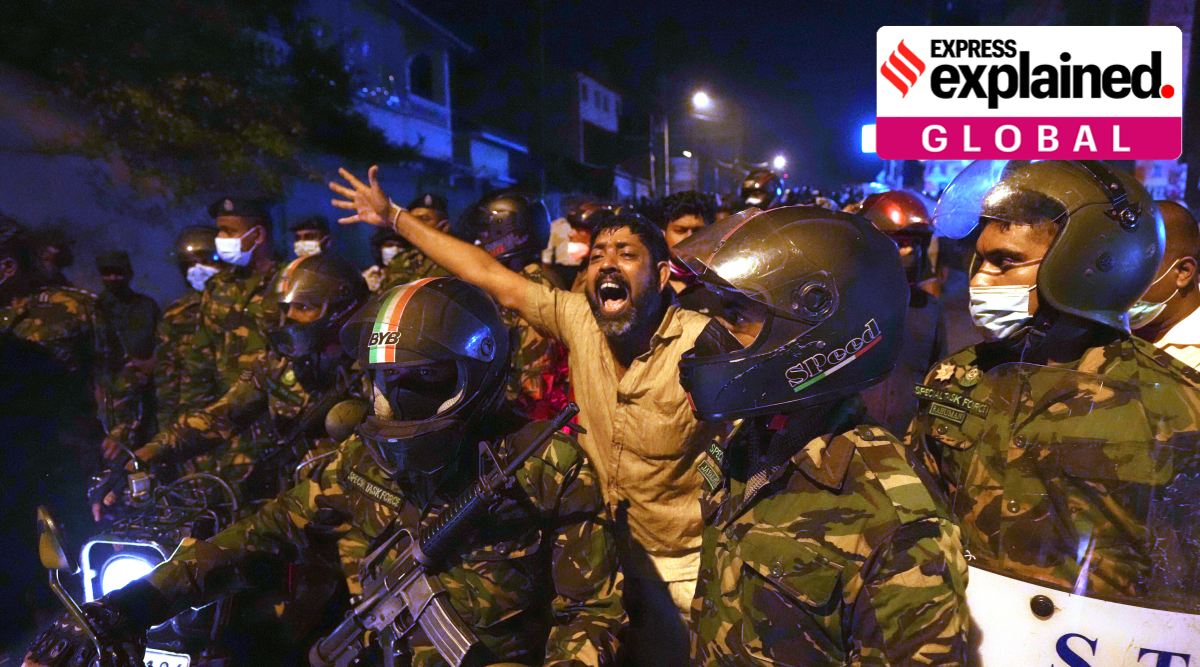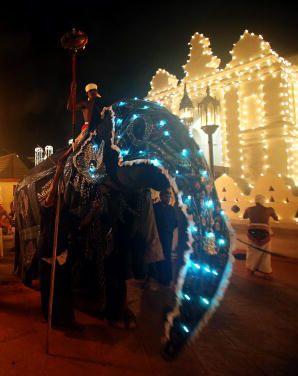Sri Lankan President Gotabaya Rajapaksa promised in his 2019 election campaign to transition the country’s farmers to organic agriculture over a period of 10 years. Last April, Rajapaksa’s government made good on that promise, imposing a nationwide ban on the importation and use of synthetic fertilizers and pesticides and ordering the country’s 2 million farmers to go organic.
The result was brutal and swift. Against claims that organic methods can produce comparable yields to conventional farming, domestic rice production fell 20 percent in just the first six months. Sri Lanka, long self-sufficient in rice production, has been forced to import $450 million worth of rice even as domestic prices for this staple of the national diet surged by around 50 percent. The ban also devastated the nation’s tea crop, its primary export and source of foreign exchange.
By November 2021, with tea production falling, the government partially lifted its fertilizer ban on key export crops, including tea, rubber, and coconut. Faced with angry protests, soaring inflation, and the collapse of Sri Lanka’s currency, the government finally suspended the policy for several key crops—including tea, rubber, and coconut—last month, although it continues for some others. The government is also offering $200 million to farmers as direct compensation and an additional $149 million in price subsidies to rice farmers who incurred losses. That hardly made up for the damage and suffering the ban produced. Farmers have widely criticized the payments for being massively insufficient and excluding many farmers, most notably tea producers, who offer one of the main sources of employment in rural Sri Lanka. The drop in tea production alone is estimated to result in economic losses of $425 million.
Human costs have been even greater. Prior to the pandemic’s outbreak, the country had proudly achieved upper-middle-income status. Today, half a million people have sunk back into poverty. Soaring inflation and a rapidly depreciating currency have forced Sri Lankans to cut down on food and fuel purchases as prices surge. The country’s economists have called on the government to default on its debt repayments to buy essential supplies for its people.
The farrago of magical thinking, technocratic hubris, ideological delusion, self-dealing, and sheer shortsightedness that produced the crisis in Sri Lanka implicates both the country’s political leadership and advocates of so-called sustainable agriculture: the former for seizing on the organic agriculture pledge as a shortsighted measure to slash fertilizer subsidies and imports and the latter for suggesting that such a transformation of the nation’s agricultural sector could ever possibly succeed.
Sri Lanka’s journey through the organic looking glass and toward calamity began in 2016, with the formation, at Rajapaksa’s behest, of a new civil society movement called Viyathmaga. On its website, Viyathmaga describes its mission as harnessing the “nascent potential of the professionals, academics and entrepreneurs to effectively influence the moral and material development of Sri Lanka.” Viyathmaga allowed Rajapaksa to rise to prominence as an election candidate and facilitated the creation of his election platform. As he prepared his presidential run, the movement produced the “Vistas of Prosperity and Splendour,” a sprawling agenda for the nation that covered everything from national security to anticorruption to education policy, alongside the promise to transition the nation to fully organic agriculture within a decade.
Despite Viyathmaga’s claims to technocratic expertise, most of Sri Lanka’s leading agricultural experts were kept out of crafting the agricultural section of the platform, which included promises to phase out synthetic fertilizer, develop 2 million organic home gardens to help feed the country’s population, and turn the country’s forests and wetlands over to the production of biofertilizer.
Following his election as president, Rajapaksa appointed a number of Viyathmaga members to his cabinet, including as minister of agriculture. Sri Lanka’s Ministry of Agriculture, in turn, created a series of committees to advise it on the implementation of the policy, again excluding most of the nation’s agronomists and agricultural scientists and instead relying on representatives of the nation’s small organic sector; academic advocates for alternative agriculture; and, notably, the head of a prominent medical association who had long promoted dubious claims about the relationship between agricultural chemicals and chronic kidney disease in the country’s northern agricultural provinces.
Then, just a few months after Rajapaksa’s election, COVID-19 arrived. The pandemic devastated the Sri Lankan tourist sector, which accounted for almost half of the nation’s foreign exchange in 2019. By the early months of 2021, the government’s budget and currency were in crisis, the lack of tourist dollars so depleting foreign reserves that Sri Lanka was unable to pay its debts to Chinese creditors following a binge of infrastructure development over the previous decade.
Enter Rajapaksa’s organic pledge. From the early days of the Green Revolution in the 1960s, Sri Lanka has subsidized farmers to use synthetic fertilizer. The results in Sri Lanka, as across much of South Asia, were startling: Yields for rice and other crops more than doubled. Struck by severe food shortages as recently as the 1970s, the country became food secure while exports of tea and rubber became critical sources of exports and foreign reserves. Rising agricultural productivity allowed widespread urbanization, and much of the nation’s labor force moved into the formal wage economy, culminating in Sri Lanka’s achievement of official upper-middle-income status in 2020.
By 2020, the total cost of fertilizer imports and subsidies was close to $500 million each year. With fertilizer prices rising, the tab was likely to increase further in 2021. Banning synthetic fertilizers seemingly allowed Rajapaksa to kill two birds with one stone: improving the nation’s foreign exchange situation while also cutting a massive expenditure on subsidies from the pandemic-hit public budget.
But when it comes to agricultural practices and yields, there is no free lunch. Agricultural inputs—chemicals, nutrients, land, labor, and irrigation—bear a critical relationship to agricultural output. From the moment the plan was announced, agronomists in Sri Lanka and around the world warned that agricultural yields would fall substantially. The government claimed it would increase the production of manure and other organic fertilizers in place of imported synthetic fertilizers. But there was no conceivable way the nation could produce enough fertilizer domestically to make up for the shortfall.
Having handed its agricultural policy over to organic true believers, many of them involved in businesses that would stand to benefit from the fertilizer ban, the false economy of banning imported fertilizer hurt the Sri Lankan people dearly. The loss of revenue from tea and other export crops dwarfed the reduction in currency outflows from banning imported fertilizer. The bottom line turned even more negative through the increased import of rice and other food stocks. And the budgetary savings from cutting subsidies were ultimately outweighed by the cost of compensating farmers and providing public subsidies for imported food.
Farming is, at bottom, a fairly straightforward thermodynamic enterprise. Nutrient and energy output in the form of calories is determined by nutrient and energy input. For most of recorded human history, the primary way humans increased agricultural production was by adding land to the system, which expanded the amount of solar radiation and soil nutrients available for food production. Human populations were relatively small, under 1 billion people in total, and there was no shortage of arable land to expand onto. For this reason, the vast majority of anthropogenic changes in global land use and deforestation has been the result of agricultural extensification—the process of converting forests and prairie to cropland and pasture. Against popular notions that preindustrial agriculture existed in greater harmony with nature, three-quarters of total global deforestation occurred before the industrial revolution.
Even so, feeding ourselves required directing virtually all human labor to food production. As recently as 200 years ago, more than 90 percent of the global population labored in agriculture. The only way to bring additional energy and nutrients into the system to increase production was to let land lie fallow, rotate crops, use cover crops, or add manure from livestock that either shared the land with the crops or grazed nearby. In almost every case, these practices required additional land and put caps on yields.
Starting in the 19th century, the expansion of global trade allowed for the import of guano—mined from ancient deposits on bird-rich islands—and other nutrient-rich fertilizers from far-flung regions onto farms in Europe and the United States. This and a series of technological innovations—better machinery, irrigation, and seeds—allowed for higher yields and labor productivity on some farms, which in turn freed up labor and thereby launched the beginning of large-scale urbanization, one of global modernity’s defining features.
But the truly transformative break came with the invention of the Haber-Bosch process by German scientists in the early 1900s, which uses high temperature, high pressure, and a chemical catalyst to pull nitrogen from the air and produce ammonia, the basis for synthetic fertilizers. Synthetic fertilizer remade global agriculture and, with it, human society. The widespread adoption of synthetic fertilizers in most countries has allowed a rapid increase in yields and allowed human labor to shift from agriculture to sectors that offer higher incomes and a better quality of life.


